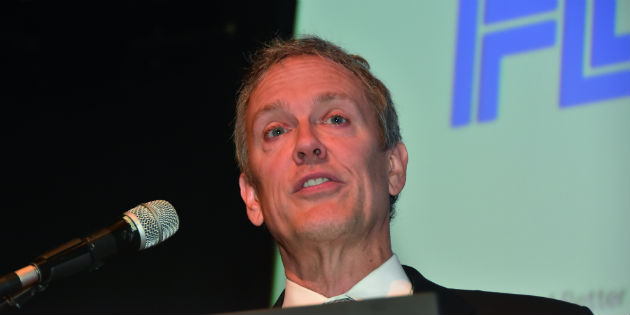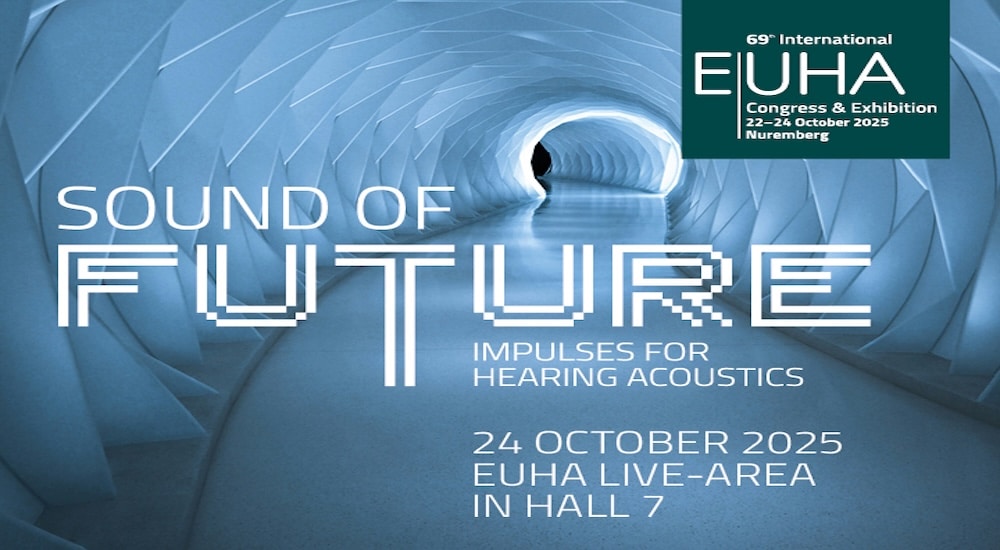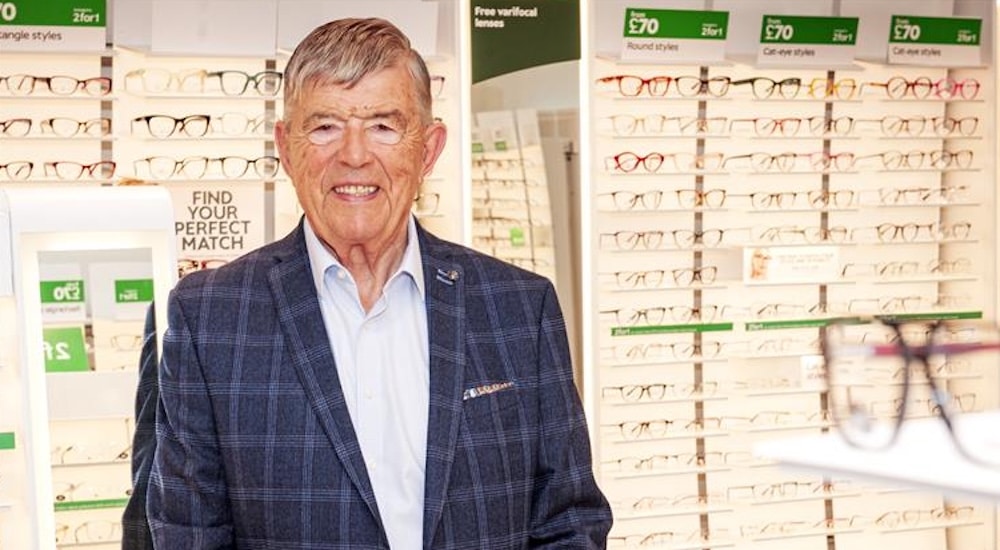“The future of audiology is as big as our imagination is!”
Trends
Vice-president of global medical affairs at GN ReSound and a former president of theAmerican Academy of Audiology, David Fabry gave several lectures at the XIV Encontro International sobre próteses auditivas, last June in São Paulo, Brazil.

He also answeredThe questions of Audiology Infos Brazil about some hot topics, among them: theCharacteristics and the importance for the hearing aid market of the boomers generation,Accessibility and psap/otc devices, and the future of the profession of audiologist.
During your talks, you emphasized several times theAmerican Baby Boomers, to which extent is this groupmaking an impact on the hearing aid market?
In the US, the “baby boomers”- born between 1946-1964– are turning 70 at the rate of 10,000 everyday! So if youlook at the total number of hearing aids sold in the US andconsider this number of 10,000 persons turning every dayof the year into our target age, and even with the currentadoption rate of only 20 to 25%, that means that the marketorganically because of the aging of the population willpotentially grow around 4% per year for the next decade.In comparison, Brazil is a very young country, so you’re notseeing this impact yet. Another fundamental difference withthe US is that two thirds of the market is public and roughlyone third is private. In Brazil, if you have hearing loss youcan get hearing aids, while in the US that’s only the case forchildren, veterans, and those with low income. But for manyadults, that’s not economically possible.
These are the reason for the current PSAP and OTCdiscussion in the US. What is your position about theseoptions?
Because of low penetration and average selling pricesamong the highest in the world, the Government, throughthe National Institute of Deafness and CommunicationDisorders and other bodies like National Academy ofSciences, decided to improve accessibility and affordabilitythrough PSAP, and now, potentially, OTC devices. Whileno one would argue against accessibility and affordabilityto increase hearing aid adoption, we should not sacrificepatient safety and efficacy. PSAP are outside medicaldevices category and are therefore exempt from FDAregulations. OTC will be regulated, and I hope similarly tohearing aids they will ensure labeling clearly identifies thatthese devices are for adults, among other things to preventunintended consequences from their use.
I firmly believe that PSAP and OTC serve a role for patientswho have the technical capability to fit themselves. However,what we’ve seen with “made for iPhone” hearing aids,whose the fitting is done by professionals, but that havethe capacity for self-adjustments, is that very few patientsactually employ that self-adjustment feature; to me, thatsays something: the oldest patients that are current hearingaid patients haven’t really embraced self-fitting.
What feedback can we get from countries with OTCdevices?
Japan and South Korea have OTC devices. But, you can’tcompare one market to another. In Japan, for instance,binaural fitting rate reaches only 39%, much less than inthe US and European countries. In Japan, the introductionof OTC meant more hearing aids being fitted, however theuser’s satisfaction is quite low. What we see is that, evenin those few countries with an OTC model, the hearing aidmarket hasn’t been destroyed. On the other hand, therehasn’t been a market where the introduction of accessibleand affordable options has dramatically raised marketpenetration. But, it may eventually happen in the US becauseof what I call the “perfect storm”, the impact of technology,of demographics – with the boomers, and telehealth anddistribution aspects. Many of us who have been here for along time may say “ok we’ve seen this before”, but this timecould be different because of this unique combination.
In this perspective, are PSAP and OTC hearing aid apossible entry for hearing care?
Yes, absolutely. The only issue that I have with these devices– and this is a personal belief, not a ReSound position –is that if we create OTC and we regulate this category toensure consistency of response conforming to somethingcomparable to an ANSI standard, then, first and foremost,we “do no harm”. Medical devices have to conform tocertain manufacturing specifications, for instance to ensurethat people are not being exposed to excessive radiationor inconsistency of output or gain. Even if we say they arenot going to exceed 120 dB in a standard, you have stillvariability that exceed what an ANSI standard does, that’s aproblem because that can lead to damaging levels of sound.The first goal in creating a self-delivery model is to ensuregood manufacture policy and consistency of response fromone device to the next, the same we are doing with hearingaids. The other overlay is whether it is self-delivered orprofessional delivered. As I previously mentioned, althoughwe’ve already had a tool to allow self-modification, afterprofessional fitting, what we’ve seen is the vast majority ofcurrent ha users aren’t employing that self-fitting, they wantthe role of professional.
Larry Humes, who lectured here at the EIPA, did a studythat shows that both consumer-driven and audiology-drivenmodels result in hearing aids that benefit people. The benefitis more from the audiology-driven model, but we can dobetter by providing more clinician-patient engagement.Eventually, the entire issue is really on the shoulder ofthe industry to keep making better technology and on theprofessionals to identify the needs of thepatients, and as long as we all focus onthe need of the patients first, instead ofour self-interest.
Why hearing aids’ user satisfactionrates have been growing over thelast decade and, at the same time,penetration have been steady?
I think the cause is the remaining stigma,not cost, because in Denmark, UnitedKingdom or even in Brazil, hearing aidsare provided “free” of charge and still we don’t have a 100%adoption rate. To be fair and introspective, maybe somepeople don’t see the benefits of amplification. Those withmild losses want help in a couple of specific situations, butdon’t need it full time, that may limit the overall adoption.And for some, of course, there is a stigma associated withhearing loss and the use of hearing aids.Any evidence that would support the notion of increaseadoption for hearing aid use either for starter devices if theyend up creating something like that, as long as safety first, Ithink it’s our collective goal and we, the practitioners, haveto change the way we’re doing things and recognize thatthe competition increasingly has come, not only within thecurrent big hearing aids manufacturers, but other consumerelectronics groups too. They force us to get better.
Going back to the boomers, how the relation betweenthis group and technology in general may affecthearing aid acceptation?
The stigma of hearing loss is still there. However, with thenumber of hearable devices that people are wearing forwireless, streaming and a number of different applications,a younger patient who is not seeing a “hearing aid”, buta device that can help to remain more and more in touch,monitor body functions or activity levels, stream music oraudio, maybe inclined to entering the market a little sooner.Boomers will use hearing assistances technology as longas they meet – or exceed – their expectations. We havehigher expectations than our parents, but if it meets ourneeds, provides us with augmented reality by being able tostream TV, I’m going to use it and I might use it earlier thanmy parents.
Could you tell us more about this link you makebetween hearing aids, virtual reality and augmentedreality?
Some years ago, we tried to create virtual reality in thehearing aid industry by having acoustic environments thatcould simulate real world situations… We had all thesesound systems that were capable of surround sound andcreate for instance a restaurant or a car environment…But if we can actually be in the car through teleaudiology,it is better because that’s the real environment,that’s not “virtual” reality. Furthermore, we have had“augmented reality” at our fingertips for decades, firstwith FM transmitters, and now with Bluetooth-enabledremote microphones. If the microphone is transmitted tothe hearing aid, in a noisy and reverberant environmentin a place of worship or lecture hall, to the degree thatthe residual hearing allows it, then we can give the hardof hearing patients the opportunity to perform as well oreven better than a normal hearing counterpart. That’saugmented reality, we’re giving them the possibility tooutperform a normal person!
Finally, in this period of growing importance ofcustomer-driven models, how do you see the future ofthe profession of audiologist?
I think that, some of the young clinicians attending theEIPA might see during their professional life the advent ofhair cell regeneration, even though we don’t know whensuch a breakthrough may occur. However, since and it’sgoing to be far from perfect, and because hair cell has toconnect to neurological function, that doesn’t mean theend of our profession. A similar example is optometry, inthe 1990, when the field saw Lasik treatments becomingpopular and when professionals had to emphasizemore the services part. In this perspective, hair cellregeneration may be an opportunity for the audiologistto assist in the diagnosis, treatment, follow-up and allthe needed rehabilitation. Also, we, at ReSound, havea partnership with Cochlear Corporation focused onbimodal amplification, and this is an example amongplenty of opportunities to anchor the profession on themedical side, whether it’s cochlear implant, middle earimplants or bone anchored hearing aids, whether it’shair cell regeneration or vestibular treatments. Tinnitusis a huge issue around the world too, and we might seemedical treatment in a not so distant future, that couldinvolve the audiologist in diagnosis, management andfollow-up of tinnitus patients as well. Actually, the futureis really as big as our imagination and our looking at ourscope of practice is! We’re not physicians, we’re not ableto prescribe medications, but there’s plenty of work for allof us. In looking at the entire spectrum of the care, fromover-the-counter device to medical side, including all ofthe aspects I mentioned, I’m not worried about findingenough things to do!
Read this in our Audiology Worldnews EUHA Congress Special.
Source: Audiology Infos Brazil.


